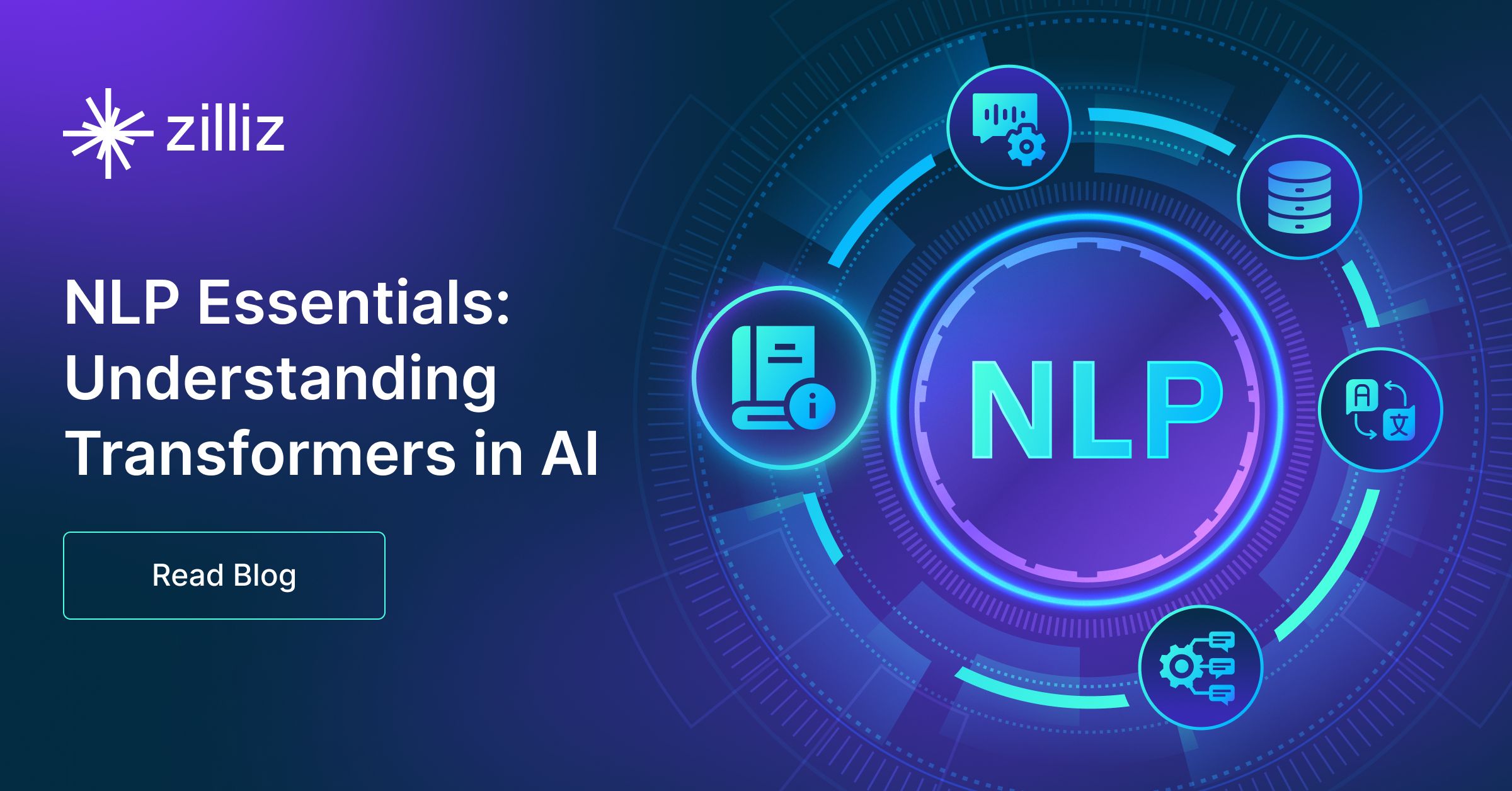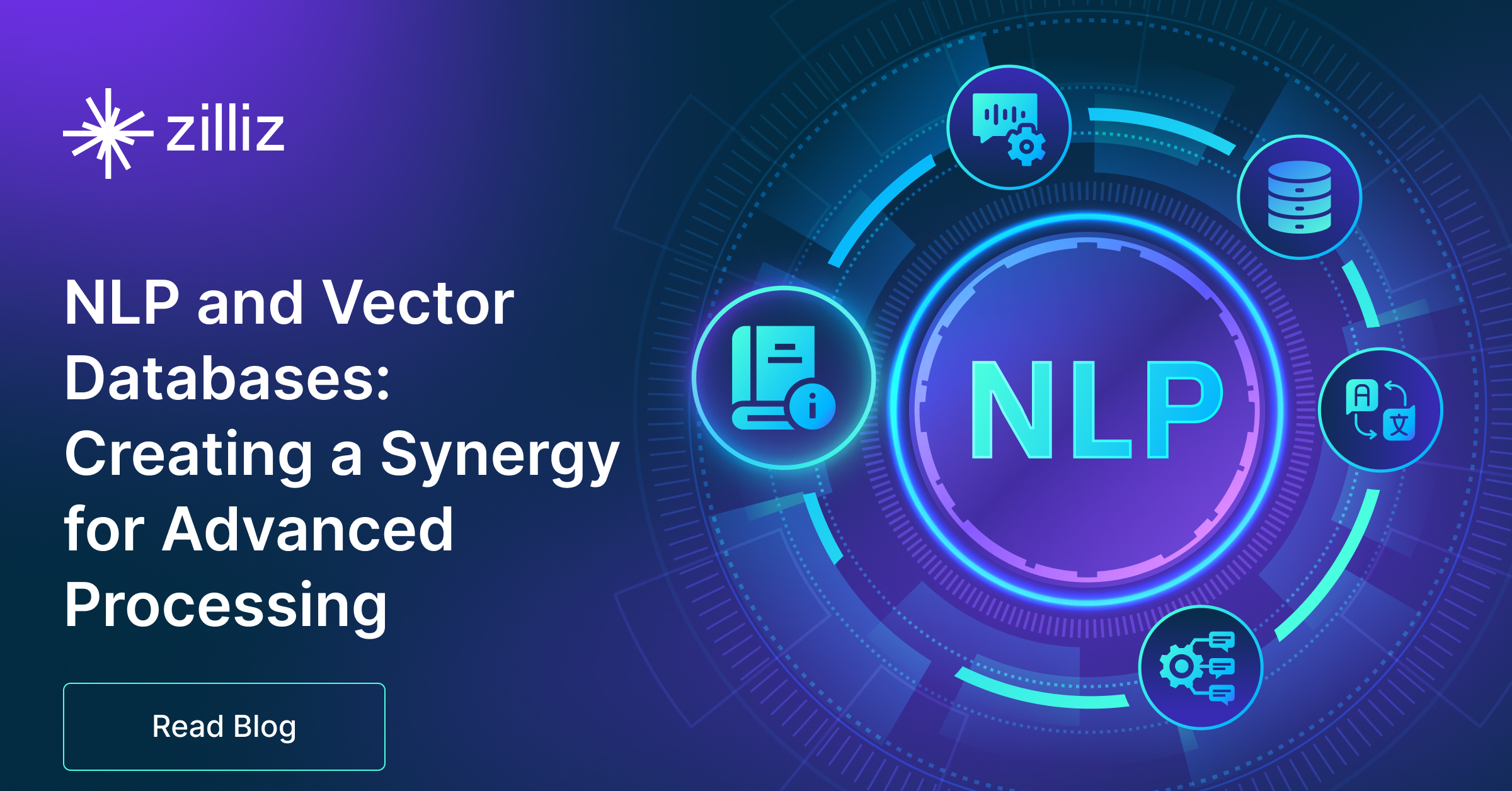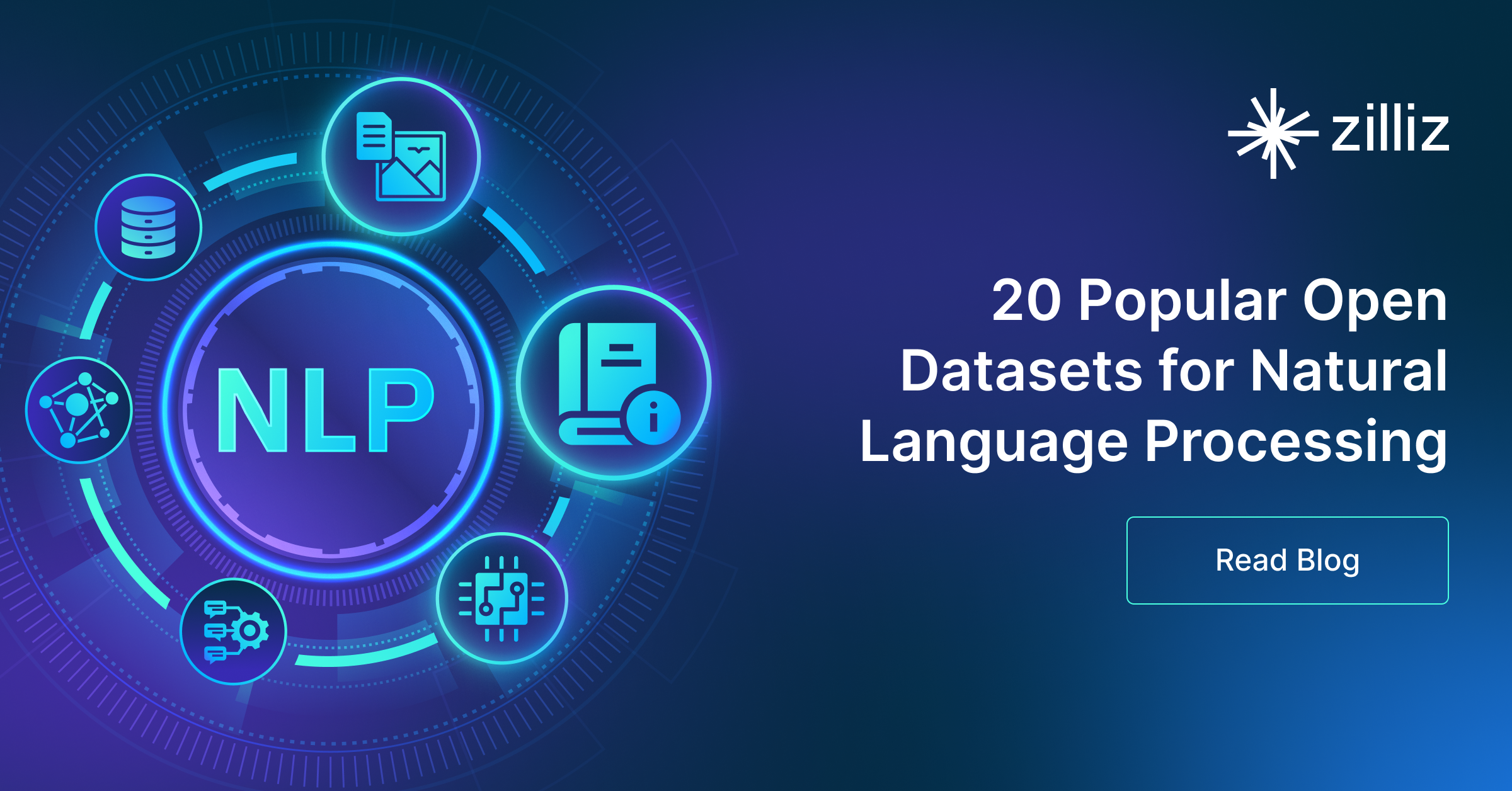An Introduction to Natural Language Processing
Learn the intricacies of Natural Language Processing and how vector databases, like Zilliz Cloud, transform NLP with efficient embedding storage and retrieval.
Read the entire series
- An Introduction to Natural Language Processing
- Top 20 NLP Models to Empower Your ML Application
- Unveiling the Power of Natural Language Processing: Top 10 Real-World Applications
- Everything You Need to Know About Zero Shot Learning
- NLP Essentials: Understanding Transformers in AI
- Transforming Text: The Rise of Sentence Transformers in NLP
- NLP and Vector Databases: Creating a Synergy for Advanced Processing
- Top 10 Natural Language Processing Tools and Platforms
- 20 Popular Open Datasets for Natural Language Processing
- Top 10 NLP Techniques Every Data Scientist Should Know
- XLNet Explained: Generalized Autoregressive Pretraining for Enhanced Language Understanding
What is NLP?
Natural Language Processing (NLP) is an interdisciplinary field that combines artificial intelligence and computational linguistics. Its primary focus is to enable computers to understand and respond to human language in a meaningful and valuable way. We could do this by building a dictionary of all sentences ever created, but this is impossible because there are too many combinations of words that we use to make sentences with human language. In addition, humans further complicate human language by having different accents, using a large, diverse vocabulary, using words that have different meanings, mispronouncing words, or even dropping words from sentences.
Natural Language Processing encompasses various techniques and algorithms that facilitate the processing of natural language data. Essentially, NLP takes unstructured data, in particular, unstructured text, and applies Natural language Understanding (NLU) using syntactic and semantic analysis of text and speech to determine the meaning of a sentence and generate Structured Text that the computer can use. Going the other direction, Natural Language Generation (NLG) enables computers to produce a human language text response based on some data input.
By leveraging NLP techniques, developers can extract valuable insights from textual data, enable machines to understand and respond to human queries, and automate tasks that involve language processing. Essentially, NLP makes human-computer interactions more intuitive, efficient, and seamless. NLP has numerous real-world applications, such as virtual assistants, chatbots, information retrieval systems, language translation services, sentiment analysis tools, and automated content generation.
What is NLP used for?
Natural language processing is used by developers to build several NLP applications with use cases such as:
Sentiment Analysis
Sentiment analysis aims to determine the sentiment or emotion expressed in a text. Sentiment analysis involves classifying text as positive, negative, or neutral. Sentiment analysis techniques may use machine learning algorithms to train models on labeled datasets or leverage pre-trained models that capture the sentiment of words and phrases. A typical use case for sentiment analysis is understanding product reviews (Was it positive or negative? Was the response sarcastic?).
Information Extraction
Information extraction involves identifying specific pieces of information from text, such as extracting names, dates, or numerical values. Information extraction uses named entity recognition and relationship extraction to extract structured data from unstructured text.
Machine Translation
NLP enables machine translation by leveraging statistical or neural machine translation models. These models learn patterns and relationships between languages from large amounts of parallel text data, allowing them to translate text from one language to another with the appropriate context.
Question Answering
Question-answering systems use NLP techniques to understand questions and retrieve relevant information from a given text corpus. NLP techniques involve text comprehension, document retrieval, and information extraction to provide accurate and relevant answers to user queries.
Virtual Assistants or Chatbots
Virtual assistants are products like Alexa or Siri, which take human utterances and derive a command from human language to trigger an action. (Hey Alexa, turn on the lights!). Chatbots use written language to interact with humans to assist with account or billing issues and general support questions. Once the text is processed, it can traverse a decision tree to provide the right action.
Text Generation
NLP models can generate human-like text based on a given prompt or input. This includes tasks like language modeling, text summarization, and text generation using techniques like recurrent neural networks (RNNs) or transformer models.
Spam detection
Natural language processing can help with Spam detection, for example, reviewing the contents of an email to determine if it is spam by looking at things like overused words, poor grammar, or an appropriate claim of urgency.
How does NLP work?
Natural Language Processing refers to a set of techniques and algorithms that enable computers to process, comprehend, and generate human language. Here's a quick overview of how NLP works:
Text Preprocessing — The initial step in NLP is typically the preprocessing of the text data. Preprocessing involves tasks such as segmentation (breaking down a sentence into its constituent words), tokenization (splitting text into individual words or tokens), Stop words (removing punctuation like stop words and common words like "the" or "is" that don't carry much meaning) and applying stemming (deriving word stem for a given token) or lemmatization (take a token and learn the meaning form a dictionary to get the root) to reduce words to their base form.
Language Understanding — NLP algorithms use various techniques to understand the meaning and structure of text. These techniques include tasks like part of speech tagging (grammatical analysis by assigning grammatical tags to each word), syntactic parsing (analyzing sentence structure), and named entity recognition (identifying and categorizing named entities like people, organizations, locations, or pop culture references).
"You should know a word by the company it keeps;"
-- John Firth, Linguist
Natural language processing models
Deep learning models that have been trained on a large dataset to perform specific NLP tasks are referred to as pre-trained models (PTMs) for NLP, and they can aid in downstream NLP tasks by avoiding the need to train a new model from scratch. There are several natural language processing models you should know about if you want your model to perform more accurately. Here is a list of some of the more well known Natural Language Processing models.
- Bidirectional Encoder Representations from Transformers (BERT)
- XLNet was published in the paper "XLNet: Generalized Autoregressive Pretraining for Language Understanding" in 2019.
- RoBERTa was proposed in the paper "RoBERTa: A Robustly Optimized BERT Pretraining Approach" in 2019.
- ALBERT model was proposed in the paper "ALBERT: A Lite BERT for Self-supervised Learning of Language Representations" in 2019.
- StructBERT was proposed in the paper "StructBERT: Incorporating Language Structures into Pre-training for Deep Language Understanding" in 2019.
- PaLM 2 is a next generation large language model that builds on Google’s legacy of breakthrough research in machine learning and responsible AI.
- Generative Pre-trained Transformer 4 (GPT-4) is a multimodal large language model developed by OpenAI. It is the fourth model in the GPT series, known for its strong foundation in natural language generation.
- SentenceTransformers is a Python framework for sentence, text and image embeddings. The initial work is described in the paper Sentence-BERT: Sentence Embeddings using Siamese BERT-Networks.
How does Zilliz help with natural language processing?
The use of vector databases by developers is revolutionizing the field of Natural Language Processing. These databases enable efficient storage and retrieval of embeddings of NLP models, simplifying the process of finding similar documents, phrases, or even individual words based on their semantic similarity. Furthermore, with a vector database, you can quickly summarise documents in your collection to get a high-level overview. You use an NLP algorithm to extract the most important sentences from the text corpus. Then, you use the Milvus to find the most semantically similar phrases to the extracted ones to capture the most essential points.
Another widespread use case is called Retrieval Augmented Generation or RAG, which often comes in the form of a chatbot. Large Language Models are trained solely on data that is publicly available. Thus, they may lack domain-specific, proprietary, or private information inaccessible to the public. Developers can store domain-specific data in a vector database outside of the LLM and conduct a similarity search to provide the top-K results relevant to the question that a user asks. These results are then sent to the LLM to derive an accurate answer for the LLM to create.
In conclusion
Using vector databases is revolutionizing Natural Language Processing by enabling efficient storage and retrieval of embeddings, simplifying the finding of similar documents or phrases. NLP combines AI and computational linguistics to help computers to understand and respond to human language. It has various applications, including virtual assistants, chatbots, translation services, and sentiment analysis. NLP models like BERT, XLNet, RoBERTa, ALBERT, and GPT-4 enhance NLP capabilities. Vector databases like Zilliz further enhance NLP by simplifying the retrieval of similar documents or phrases based on semantic similarity.
- What is NLP?
- What is NLP used for?
- Virtual Assistants or Chatbots
- How does NLP work?
- Natural language processing models
- How does Zilliz help with natural language processing?
- In conclusion
Content
Start Free, Scale Easily
Try the fully-managed vector database built for your GenAI applications.
Try Zilliz Cloud for FreeKeep Reading

NLP Essentials: Understanding Transformers in AI
This article will introduce you to the field of Natural Language Processing (NLP) and the breakthrough architecture, the transformer.

NLP and Vector Databases: Creating a Synergy for Advanced Processing
Finding photos, recommending products, or enabling facial recognition, the power of vector databases lies in their ability to make sense of the complexity of the world around us.

20 Popular Open Datasets for Natural Language Processing
Learn the key criteria for selecting the ideal dataset for your NLP projects and explore 20 popular open datasets.
